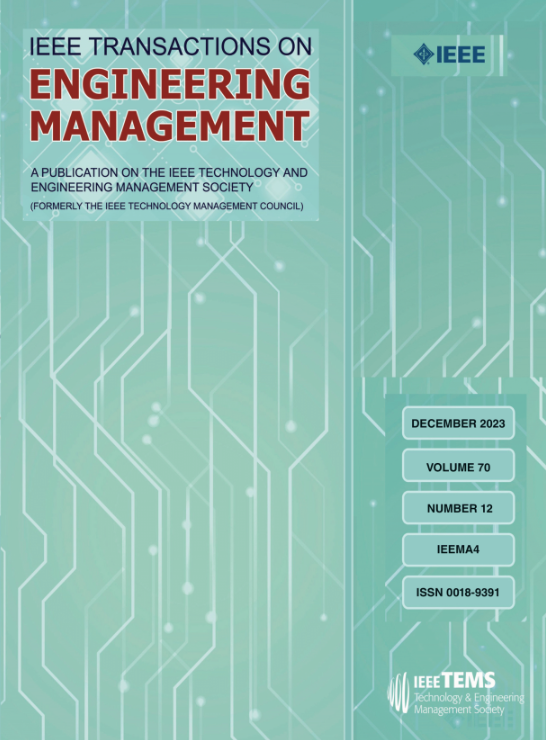Technology Sharing Strategies for New Product Diffusion With Consideration of Firms’ Risk Aversion
IF 5.2
3区 管理学
Q1 BUSINESS
引用次数: 0
Abstract
This article examines the effects of risk aversion on the incentive for an incumbent to share its new technology with a potential entrant. While competition emerges with technology sharing, the involvement of additional firm in the development of the new-technology-based products increases the lowest willingness to pay (LWTP) of consumers for the products. A game-theoretic model is developed to analyze the two-firm competition. Results show that asymmetric risk preferences of firms can lead to their asymmetric competitive advantages (or disadvantages), which increase (decrease) the quantity of products offered by the less risk-averse firm (the more risk-averse firm) under high product substitutability. Generally, the more risk-averse the incumbent is, the more likely it is to freely share its technology; however, if competitive disadvantage exists for the entrant, then the less risk-averse incumbent is more likely to share. Moreover, the incumbent earns more (less) from licensing than from wholesaling when it is substantially less (more) risk averse than the entrant. Interestingly, while the enhancement in the consumers’ LWTP generally promotes technology sharing, it may restrain the lowly risk-averse incumbent from wholesaling to the highly risk-averse entrant in that the first-mover advantage of the entrant can mitigate its competitive disadvantage.考虑企业风险规避的新产品扩散技术共享策略
本文考察了风险规避对现有企业与潜在进入者分享其新技术的激励的影响。虽然竞争伴随着技术共享而出现,但新技术产品开发中额外企业的参与增加了消费者对产品的最低支付意愿(LWTP)。建立了分析两企业竞争的博弈论模型。结果表明,企业风险偏好的不对称会导致其竞争优势(或劣势)的不对称,在高产品可替代性下,风险厌恶程度较低的企业(风险厌恶程度较高的企业)提供的产品数量增加(减少)。一般来说,现任者越厌恶风险,就越有可能自由分享其技术;然而,如果进入者存在竞争劣势,那么风险厌恶程度较低的在位者更有可能分享。此外,在位者从许可中获得的收入比从批发中获得的收入多(少),因为它的风险厌恶程度比进入者低(多)。有趣的是,虽然消费者LWTP的提高一般会促进技术共享,但它可能会抑制低风险厌恶者向高度风险厌恶者批发,因为进入者的先发优势可以减轻其竞争劣势。
本文章由计算机程序翻译,如有差异,请以英文原文为准。
求助全文
约1分钟内获得全文
求助全文
来源期刊

IEEE Transactions on Engineering Management
管理科学-工程:工业
CiteScore
10.30
自引率
19.00%
发文量
604
审稿时长
5.3 months
期刊介绍:
Management of technical functions such as research, development, and engineering in industry, government, university, and other settings. Emphasis is on studies carried on within an organization to help in decision making or policy formation for RD&E.
 求助内容:
求助内容: 应助结果提醒方式:
应助结果提醒方式:


